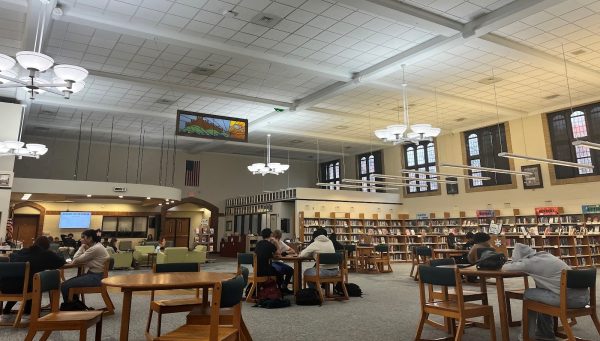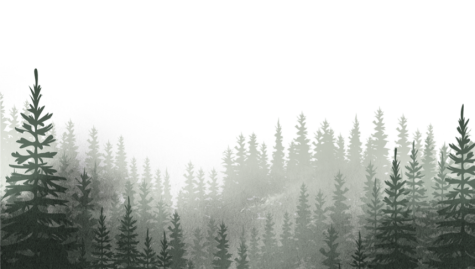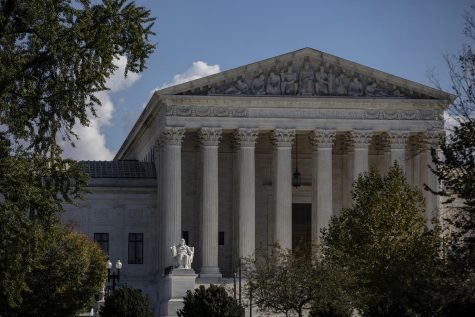Climate Change Is Real, And It’s Happening Now
Nearly 97% of climate experts believe that climate change is real, and a significant amount believe that it is the result of rising greenhouse gasses emitted into the Earth’s atmosphere. After all, it is a proven fact by NASA that the planet’s surface is warming with “most of the warming [having] occurred in the past 35 years.”
Many are aware of the devastating long term effects that will occur over several generations: ice melting in the Arctic, rising sea levels, intensifying heat waves, and potential losses of polar bears.
What many people do not realize is climate change does not cause only these long term effects. In 2018 it has already begun to pervade our lives and alter aspects without recognition.
Since the beginning of time humans have relied on wheat as their main source of food, and unless you are gluten free, wheat remains a part of your daily diet. This staple ingredient is one of the crops that is already experiencing shortages. According to research by Nature Climate Change, many harvesting regions will suffer from significant yield reductions as a result of just a one-degree Celsius increase in temperature. The U.S., specifically Kansas, “reported a 7.3% decrease in wheat yield.”
This means that of Kansas’ 8.8 million acres of wheat produced in 2014, 642,000 will be lost solely because the planet warmed by one degree Celsius. Keep in mind that just one acre can feed 9,000 people for one day; now multiply that by 642,000.
That’s only for Kansas. Nearly every state in the U.S. produces wheat in varying amounts.
As a result of loss of production, the demand for the product goes up, which means soaring prices. Back in August in Chicago, wheat bushel prices hit a high of $5.93, nearly a dollar higher than the average price of $5.00.
Travel is something nearly everyone has on their life bucket list, and with high school ending in a few months the optimal time for many is before college begins. However, if your destination has a coral reef on it, it won’t be as pretty as it once was. Based on data from the National Ocean Service thirteen years ago U.S territories in the Caribbean “lost half of [their] coral reefs… due to a massive bleaching event” which was a result of rising water temperatures. This was confirmed by satellite data showing that thermal stress in 2005 was greater than the last 20 years combined.
So you may want to rethink that trip to the Great Barrier Reef which lost 30% of its coral in just nine months. Researchers were surprised when they realized that millions of corals in the northern part of the Great Barrier died quickly within just 2-3 weeks after being exposed to extreme heat stress.
These events are the result of ocean acidification, which happens when the water absorbs carbon dioxide from the atmosphere. On average the ocean absorbs 30% of the carbon dioxide in the air, so as humans continue to make gas levels rise, the ocean continuously takes in more and more.
Another current and visual effect of climate change is the surge of strength and frequency of natural disasters. It is widely known that just last year the U.S. experienced back-to-back deadly hurricanes, and affected areas are still trying to recover. In 2014 Illinois faced severe heavy rainfall, which prompted tornado warnings; thankfully, no tornadoes ever formed.
While in the Midwest, it is unlikely for one to be hit by a hurricane or tropical storm, the relationship between extreme precipitation and warming weather is clear according to Center For Climate And Energy Solutions. Warmer air can hold more water vapor, so for every additional degree of warming “air’s capacity for water vapor goes up by about 7 percent.” This explains the increasing amount of severe thunderstorms in urban areas where risk is higher due to running water.
The Climate Science Special Report disagrees that climate change is having immediate and prevalent effects, since industry has become “less carbon intensive,” and predicts that a significant rise in temperature, which is forecasted to be only 2 degrees Celsius, will not occur until the end of this century.
Even if the projected rise in temperature is 2 degrees Celsius, NOAA and NASA data show that it has already risen 0.9 degrees Celsius, with shattering results visually seen by Hurricane Harvey, rising grocery prices, and bleached coral reefs.
People view climate change the same way they view smoking. There are countless studies and research showing that both have distressing effects, but people continue to partake in activities thinking they are immune to the risk. Do not view climate change as a distant problem. It is happening, and things needs to change.
There several small things everyone can do to make a change. Stop using one-time use items – straws, paper plates, red solo cups. Instead buy a reusable water bottle and take the time to wash the dishes. Save energy – use energy efficient light bulbs, unplug technology when it’s not being used, or don’t wash clothes in hot water. The little things add up and eventually things will change.









